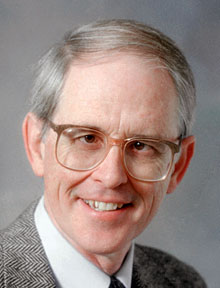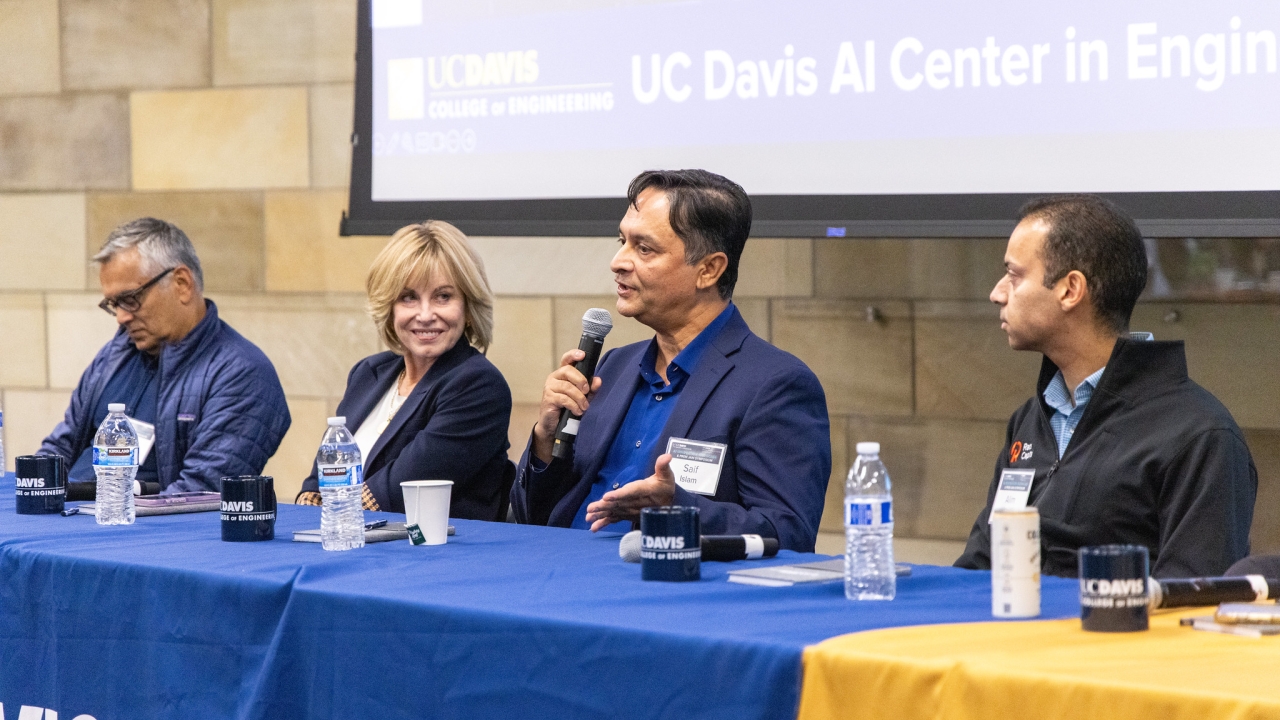Biography: James F. Shackelford
 At a reception held Jan. 15, 2011, to celebrate the venerable UC Davis Nelson Gallery’s new home, James Shackelford — a professor in the campus’ Department of Chemical Engineering and Materials Science — spoke eloquently about the wide-ranging academic atmosphere that makes UC Davis so special:
At a reception held Jan. 15, 2011, to celebrate the venerable UC Davis Nelson Gallery’s new home, James Shackelford — a professor in the campus’ Department of Chemical Engineering and Materials Science — spoke eloquently about the wide-ranging academic atmosphere that makes UC Davis so special:
“In a campus with agricultural roots and something of a techie reputation, we’ve also had this great art department evolve over the years. It’s an example of the diversity and richness of UC Davis.”
Shackelford has led a similarly diverse career since arriving at UC Davis, deftly dividing his time between research, academic responsibilities, departmental service and an extensive passion for the world of fine art. He also has championed diversity in the campus student body, both individually and through his role as director of the UC Davis Integrated Studies Honors Program.
Shackelford is, truly, a man for all seasons.
He grew up in Washington and obtained his undergraduate and master’s degrees in ceramic engineering in 1966 and ’67, respectively, at the University of Washington, Seattle. He switched to UC Berkeley to pursue a doctorate in materials science and engineering, which he completed in 1971. Following a few years of post-doctoral research in Eastern Canada, he joined the UC Davis College of Engineering in 1973.
He quickly established a strong reputation in his research fields of materials science, the structure of materials, nondestructive testing and biomaterials. In 1985, he published the first edition of Introduction to Materials Science for Engineers, a seminal textbook that has gone through six subsequent editions — most recently in 2008 — and has been translated into Chinese, German, Spanish, Italian and Korean.
1985 was a busy year: Shackelford also became the College of Engineering’s Associate Dean for Undergraduate Studies, a position he held for 17 years. During this time, he helped the college grow to become one of the country’s top 20 engineering programs.
Shackelford also became intimately involved with outreach efforts designed to target disadvantaged students, notably the UC Davis MESA (Mathematics, Engineering, Science Achievement) Schools Program. It wasn’t merely a case of increasing the percentage of engineering graduates from minority groups; Shackelford understood — and championed — the value of alternative viewpoints, and approaches to problem-solving, that results from a widely diverse undergraduate population.
He therefore was primed to become involved with the UC Davis Integrated Studies Honors Program, initially helping its administrator, Nora McGuinness, lobby for general education (GE) status for IST courses. When McGuinness stepped down in 2001, Shackelford became the program’s new director, a position he holds to this day. Aside from administrative responsibilities, he typically leads the fall seminar. He also has taken his coursework overseas, and recently served as an instructor for the 2011 UC Davis Summer Abroad Program, when he taught the basics of materials science and engineering at Korea’s Yeungnam University. In effect, UC Davis’ chemical and materials engineering “lecture hall” moved to Yeungnam University for a month.
Shackelford has been recognized for such efforts; he received a special citation during UC Davis’ Soaring to New Heights Diversity Awards in 2000, when he was honored as “co-principal investigator for several grants and programs that encourage the participation of underrepresented and/or disadvantaged students in math, science and engineering disciplines, and for serving as a mentor and employer for a diverse group of individuals.” He also earned a Distinguished Teaching Award from the UC Davis Academic Senate in 2003.
“His warm personality made the gigantic lecture hall feel much less austere and more cozy,” noted a former student. “Even in a class of about 100, I soon realized I could raise my hand and ask questions.”
Shackelford has been a Fellow of the American Ceramic Society since 1992, and he received that organization’s Outstanding Educator Award in 1996. Shortly after the terrorist attacks on 9/11, as a member of the UC Davis DELTA Group (for Detection and Evaluation of Long-range Transport of Aerosols), he helped analyze the dust and smoke that blew through lower Manhattan after the collapse of the World Trade Center. The resulting study demonstrated that the debris pile was a chemical factory that exhaled pollutants in particularly dangerous forms, which could penetrate deeply into the lungs of workers at Ground Zero.
Shackelford joined fellow Nuclear Science and Security Consortium (NSSC) faculty member Mani Tripathi to help develop the course proposal for what became a Designated Emphasis in Nuclear Science (DENS), which was approved by the UC Davis Academic Senate in June 2012. As a result, PhD students participating in the DENS are able to choose from a wide spectrum of courses spread across six College of Engineering departments.
On a gentler note, in the spring of 2012 Shackelford served as faculty sponsor for PhD candidate Kristan Reed’s creation of a Davis/UC Davis chapter of Slow Food USA, which joined the long-established Slow Food Yolo chapter. The Slow Food movement is built on the notion that the pleasures of the table offer a route to social change that connects people to each other, and to the global environment: definitely a philosophy that would be embraced by a modern Renaissance scholar such as Shackelford.




